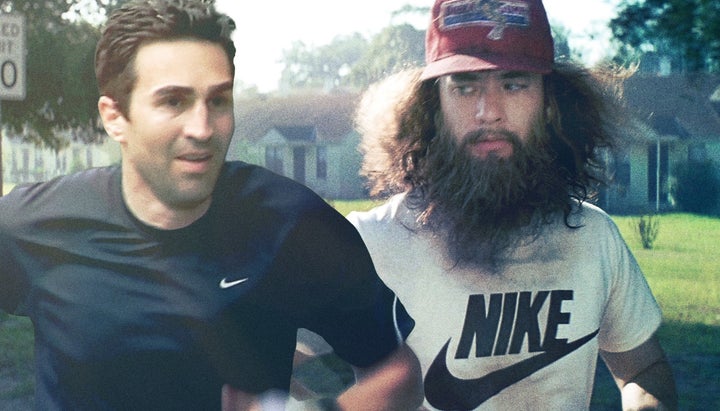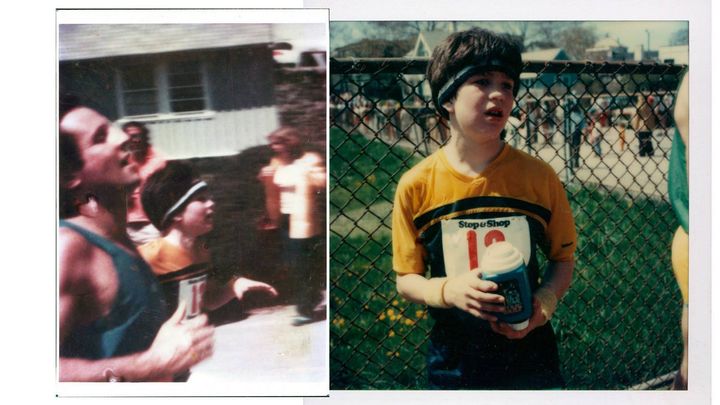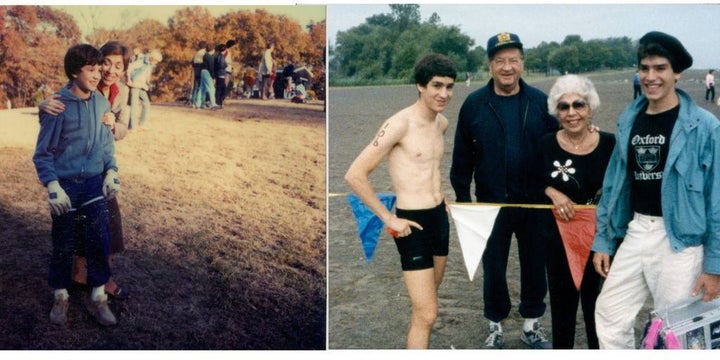
This summer I ran my 50,000th mile.
Adding every mile I have ever run – long runs, track workouts, easy jogs, ultimate frisbee games at camp in the 1980s, little league baseball games in the 1970s, sprints to airport gates to catch flights – I calculate that I reached the 50,000 mile mark sometime this summer. Probably earlier.
To me and my University of Oregon distance running teammates, this begs the question: “But how fast are you?”
Not necessarily very fast.
I am a former sub-4:30 miler and 72-minute half-marathoner. Depending on your perspective, that may make me pretty fast. Or not.
Coming from a school that boasts Olympic distance running legends and gold medalists (think Prefontaine, Salazar, McChesney and Centrowitz, to name a few), I may rank at the bottom of the Oregon track alum list. For all the passion I had for running, I had zero natural running grace, and I was certainly one of the slowest distance runners that Coach Dellinger churned out.
And I’ve gotten slower since. I ran a mile time trial recently, as I like to do occasionally. This time I told myself that as long as I was under 6:00, I could finesse it and tell people, “Hey, I ran 5 minutes and high change.”
I ran 6:03. Can’t finesse that.
But while I insist that I will get back under 6 minutes soon, I take some solace in the fact that in my 49th year, I reached 50,000 total miles.
By the Numbers
50,000 miles. My business school classmate, Steve Jurvetson, surely has a Tesla in his garage that never made it that far. That’s equivalent to the distance around the earth’s equator (24,874 miles) multiplied by two. Or, consider running across the U.S. – as the fictional Forrest Gump did – roughly 2,800 miles. Gump crossed the country four times, and then made the TV news and attracted a cult following. I’ve run the equivalent of 18 cross-country trips.
How did I do it?
Not by running marathons. Running a 26.2-mile race is a different level of crazy that I never quite graduated to. No, I’ve just completed a lot of reasonable-length 3-, 5- and 8-mile runs.

I started running at a young age, completing my first 5-mile race in Boston at age 9. I reached a 1,000 miles before my 10th birthday and continued to run casually through age 13, averaging 15-25 miles per week (MPW). By age 14, I was already 10% of the way to 50,000. I then began to run more seriously, logging roughly 50-60 MPW, then an average of 70-90 MPW for the next half dozen years, until I approached college graduation and my priorities shifted.
After college, I started working two jobs and cut back on running until I got accepted to grad school. I then settled into roughly 30 miles per week. Every week. The weather conditions, locales, times of day, cities and circumstances have varied considerably, but my daily run has remained remarkably consistent.

In high school, I often woke up at 5:45 a.m. and ran 8 miles with my father – a 2:39 masters marathoner and local running hero who inspired my own running. We’d talk every step of the way before finishing the run, after which I hustled off to catch the school bus. By 3 p.m., I was ready for my second daily run at cross-country practice. Those were good days.
Over the years, I’ve run in Central Park at 2 a.m. I’ve run on hotel floors in Switzerland in the middle of the night. I’ve run in snow on Christmas morning when traffic is non-existent. I’ve run straight up Mt. Ashland Ski Road in Oregon. I’ve run in airport parking lots during extra-long layovers (thank you, Hertz, for watching my luggage). And I treasured each of these runs.
So, with equal parts discipline, enthusiasm and tenacity, I have now run 50,000 miles.
Along the way, I’ve learned two important lessons.
Lesson #1: Fast Is Important—and Relative
Watch elementary school children play soccer or other sports, and you’ll immediately notice something fundamental: They are unafraid to run as fast as they can. Kids do it all the time.
Then, years and decades pass, and along the way, people stop running fast and many stop running completely.
Don’t.
Even if running fast is as fun for you as eating gravel for breakfast, I swear it’s worth doing for as many years as possible. Let’s maintain that aspect of our childhood and fitness as long as we can. If we’re lucky, we can emulate the late Ed Whitlock and hold on that “real feeling of enjoyment” from running.
Admittedly, fast is relative. My all-out 10K race pace today – roughly 7 minutes/mile – was a nice light trot for me back in 1987. But it’s important, for health and other reasons, to try to run as fast as you can once in a while. Occasional anaerobic workouts are invaluable. As Bill Bowerman said, “If you have a body, you are an athlete.”
Lesson #2: Running Is Two-Dimensional; Life Is Three-Dimensional
One of the unique aspects of running for time is its pure, stone-cold inflexibility. "There is no such thing as luck in distance running," said 2:13 marathoner Josh Cox.
He’s right. When you’re trying to run fast, the watch doesn’t lie.
In other sports, things can be finessed. A hobbled Kirk Gibson can hit a game-winning homerun off Dennis Eckersley in the World Series. An injured Willis Reed can score two baskets in Game 7 of the NBA Finals, inspiring the Knicks to a title win over Wilt Chamberlain’s Lakers.
But the watch is less forgiving than Eck or Wilt.

In 1987, I ran a half marathon in 72 minutes (and high change), and that 5:33/mile pace race reflected my fitness and ability at that time. Thirty years later, I am now over thirty minutes slower. That means the 1987 Phil could run 13 miles, stop to watch a full episode of Who’s the Boss?, then sprint the final 193 yards and still beat the 2017 Phil. Easily.
Yes, even Tony Danza would admit the watch is unforgiving.
Unlike running, however, life is three dimensional. Distance running is a lonely, independent-minded sport, even when you’re competing for a team. Life brings infinitely more complex challenges—and opportunities. It can actually be more forgiving sometimes.
I am now a relatively new husband and brand-new father of a 7-month-old girl who has now crawled an estimated 1/10th of a mile. Is it possible that not a single one of the 50,000 miles I’ve run has been quite as amazing as watching her various fits and starts of crawling?
Yes.
“But what about that one sub-4:30 mile you ran?” you ask.
Not as amazing.
My appreciation for my wife, daughter, and all the other non-running aspects of my life has grown. Immeasurably. Perhaps that’s the greatest residual achievement of running so many miles and fighting an unforgiving battle with the watch: realizing how much more can be crammed into each hour besides miles and yards.
What Comes Next?
Does this enhanced appreciation mean that I will curtail my running? Will I stop trying to run fast? Not a chance. I am excited about running fast, on occasion, even as my measure of fast gets slower each year.
I now realize I will likely be unable to log another 50,000 miles in my lifetime. So, I’m actually stopping for a moment—taking a breather to appreciate this achievement and those who helped and accompanied me, in person or in spirit, on those runs.

Author and Professor Norman Maclean wrote about his treasured memories of fly-fishing with his father and brother. He continued to fish the Big Blackfoot River even as he grew “too old to be much of a fisherman.” I do the same with memories of my friends and family members who once joined or watched me as I now venture out solo for my daily run.
Then there’s my dad. For me and my 77-year-old father, our regular 8-mile runs before school have evolved into very rare, biennial 1-mile slow jogs around the track, before he stops to watch me. On this run, there are now few words spoken. The frequency, distance and pace of this run – as with all my others – has so greatly diminished.
The 50,000 miles’ worth of memories, however, are more hallowed than ever.
So, after carefully reflecting on this milestone, I turn my attention to the many non-running milestones to come. Our baby girl is already 1/10th of a mile along her trek. I cannot wait to accompany her as she begins her journey down brand-new roads.

Phil is a high-tech marketing executive, business columnist and author of a popular HuffPost piece entitled 6 Things Men Secretly Love About The Women In Their Lives. He lives and runs in Silicon Valley. Follow Phil on Twitter here.
